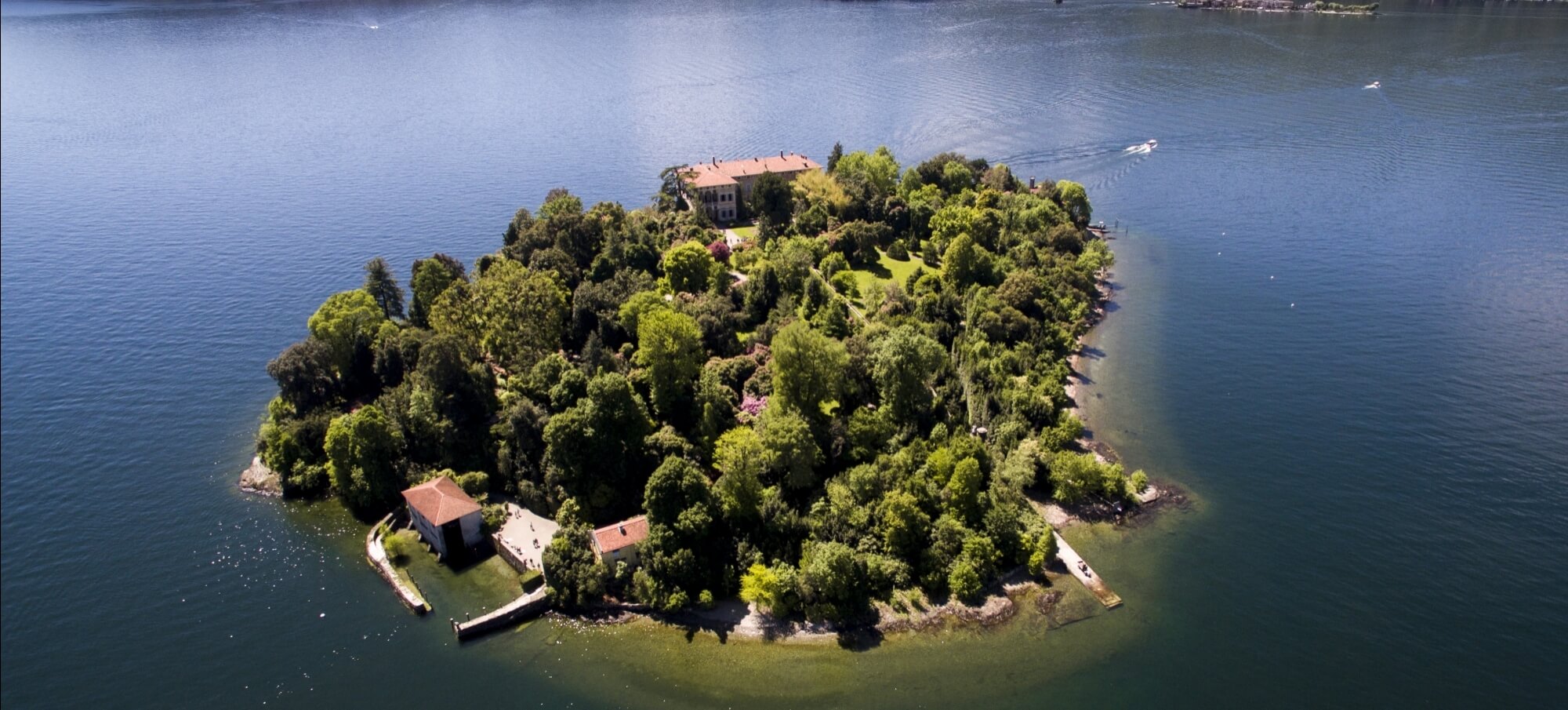5 things not to miss on Lake Maggiore
Think Belle Epoque and you are in for a treat!
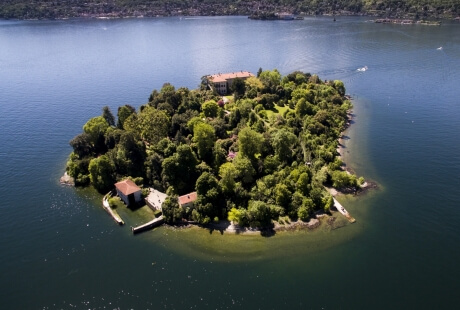
When traversing the Alps on your way south, upon leaving snow-capped mountains you will be met with a burst of Mediterranean colours: this is the unmistakable charm of the Italian lakes. Immense specks of water where every activity and taste finds a match, or more secluded, intimate affairs where daydreaming takes on a new meaning.
Amid this marvel bonanza, Lake Maggiore strikes a chord because of its romantic hideaways, panoramic perches, astounding past and serene landscapes.
Isola Bella and Isola Madre. Take time to visit these jewels, perhaps combining a private visit to both islands – a splendid way to fall in love with the magic atmosphere on the lake.

1. The distinct appeal of Isola Madre
Simply sensational, the Borromean Islands, off the banks of Stresa, are rare gems. Isola Bella is perhaps the most famous and is certainly out of the ordinary: its luxuriant Italian-style garden, replete with white peacocks and a grotto studded with pink marble and lava stone, defines its beauty. The Palazzo Borromeo holds masterpieces by eminent artists as well as Flemish tapestries and famous sculptures. Isola Madre, however, holds a unique allure that exudes memorable artistry. The largest in the archipelago, it hosts one of the oldest botanical gardens in Italy: its benign microclimate helped create an exceptional 7.5 hectares of green spaces where magnolia and bamboo groves, wisteria pergolas, magnetic water lilies’ ponds coexist alongside rare sub-tropical plants and exotic trees, the oldest of which is an enormous Kashmir cypress, planted in 1862. The terrace of proteas – ancient prehistoric flowers that have become South Africa’s national flower – is a jewel that should not be missed. This English-style garden was formed in the early 19th century and Gustav Flaubert was so enthralled by it that he defined it as “the most voluptuous place I’ve seen in the world.” Upon visiting the island, you will be met by the stark presence of Palazzo Borromeo: construction began in the 16th and finished in the 18th century, and it possesses an outside sobriety that is juxtaposed with an intriguingly rich interior: here, antique furnishings and adornments live in unison with richly decorated state rooms, sumptuously brocaded bed fittings and a vast array of frescoed rooms. The marionette theatre is worth a trip: Alessandro Sanquirico, a stage designer for the Alla Scala theatre in Milan, conceived the sets and backdrops in 1830, and here you will find a theatrical world that would make a modern theatre-goer blush: from musical scores to entire scripts, marionettes and designs of various shape and form crown the rich past of this unique treasure on the lake.
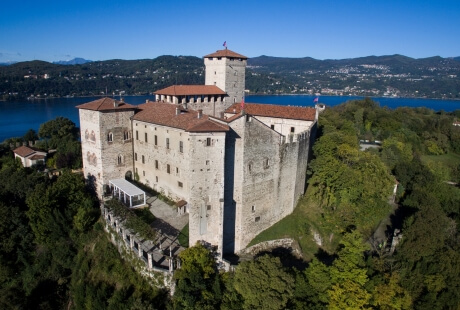
2. Holding the fort - Rocca di Angera
A pearl of matchless beauty, this fortress towers over the town with a mighty pride that hides several secrets. Bought by the Borromeo family from the Viscontis in 1449, the Rocca is the crowing of five constructions that were built between the 13th and the 17th century, creating an illustrious display of power, art and love of nature. You can admire exceptionally vivid frescoes in the historic rooms such as the Sala dei Fasti, Sala delle Cerimonie and Sala della Giustizia, or enjoy a unique collection of dolls and toys in the twelve rooms that host this original Dolls and Toys Museum. Over 1,000 dolls from the 18th century onwards, as well as various toys and a peculiar automaton section: these specimens, mainly coming from France and Germany, move to the tune of famous arias. The Ala Scaligera is the oldest building in the Rocca; meticulous restorations in recent years have exposed marvellous frescoes displaying the Scala and Visconti family symbols, the ladder and and the snake. The Medieval Garden, created in 2008, has been carefully outlined after consulting illuminated manuscripts and ancient documents, with the aim of recreating the original green space of the Rocca; here, the cycle of life of plants is respected and guarded, according to old traditions. The Giardino dei Principi is the jewel in the crown of this 2,000m2 magical place, with a rose garden hosting species such as the Rosa Gallica and the botanical rose, as well as Iris fiorentina, Lilium candidum and Paeonia officinale varieties.
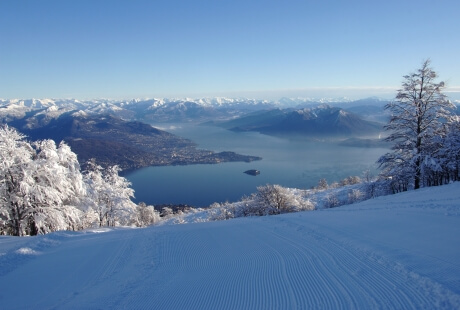
3. Mottarone - a terrace over seven lakes
Just when you thought you had banked on all the cinematic views the lakes had to offer, there comes Mottarone, a somewhat modest-looking, hilly mountain that offers a 360° view, encompassing the Po plain and Monte Rosa, throwing in an astonishing seven lakes: in addition to Maggiore and Orta, on a clear day you will also see Mergozzo, Varese, Comabbio, Monate and Biandronno lakes. It’s not all contemplation and bucolic landscapes, however, for Mottarone is also the ideal playground for sporty folks. You may cycle up to the 1492m-peak, then ride down with a mountain bike along adrenaline-filled trails, or you could hike, choosing one of the many paths that criss-cross the mountain. A panoramic cable-car whisks you from Stresa to the top and is a superb way of taking in the majestic views, or why not explore the newly created Alpyland, a small theme park which includes a 1200-metre long bobsled-descent with staggering views on the lake. You could also have great fun at the Mottarone Adventure Park, where 4 routes of varying difficulty test the stamina and balance of adults and children alike. Mottarone is also a ski area, with easy green and blue runs: think of the magic of skiing and overlooking several lakes! If you long for some peace and quiet, head to the Alpinia Botanic Garden: created in 1934, it contains more than a thousand alpine and sub-alpine plant species, as well as rarities from China and Japan.
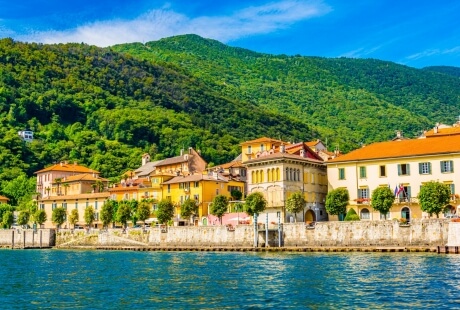
4. Cannobio and Cannero
Ranking high on a list of pretty towns in the area, Cannobio is the last major centre before the border with Switzerland on the western shore of the lake. Quaint and picturesque, its east-facing waterfront promenade is a small jewel, replete with pastel-coloured houses overlooking the pedestrian area, lively bars where you can sit and watch the world go by, and cobbled alleyways where getting lost is an art, to be enjoyed like an unusual treasure-hunt on the trails of la dolce vita. The Bramante-inspired Santuario della Pietá church hosts a painting that allegedly started bleeding in the middle Ages, giving rise to legends that have stood the test of times. You may also go further afield and explore the nearby Valle Cannobina, walking to the Orrido di Sant’Anna, an impressive ravine where the rushing waters have carved a path through the mountain. The rocky beach you can find here also offers an escape from heat at the height of summer.
Further to the south, Cannero is also a pleasant town: the Castelli di Cannero, seen from the shore, are intriguing: small islets which host ancient fortifications, built between the XI and XII century, called Malpaga. Approaching them by boat makes the experience ethereal, their structure still very visible and dominating the islands. Prince Vitaliano recently encouraged a restoration project and visiting these captivating islets will soon be possible: exciting explorations await.
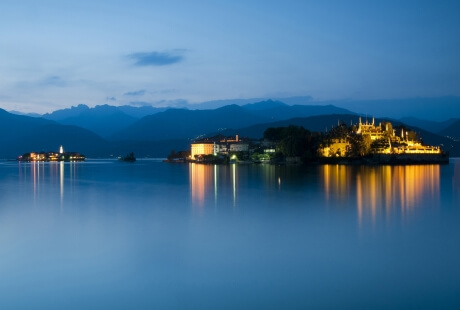
5. The lake from the lake
As decadent as it may sound, cruising on the lake is a superb way of exploring, admiring and savouring this gentle speck of water. Lulled by the waves, taking in all the beauty this exquisite corner of northern Italy offers will come as journey into wonderland. You may set off from Stresa, Verbania or Arona, among others, with various stops on the way: fortresses and villas, churches and quaint villages will have a different taste if seen from the water.
You could go as far as Switzerland and visit Locarno, a sunny town with an unexpected Mediterranean climate, a marvellous waterfront promenade and an interesting old town, or picturesque Ascona, famous for its springtime jazz festival and a very impressive modern art museum. Better still, you could combine a cruise on the lake with an adventurous trip via train: the Centovalli train sets off from Locarno and reaches Domodossola, further to the east, via numerous viaducts and is truly scenic. From there, you could take the train back to Arona or Stresa, the ideal crowing of a perfect day on the lake.
Where to Stay when in the area
Villa e Palazzo Aminta Hotel & Spa
Ask for more info about the best accomodation and top Experiences on Lake Maggiore marketing@claudiadarin.it
All contents, photos and texts are subject to copyright. They are only authorised on my website and social media. Ideas can be a source of inspiration, but any unauthorised use of images and texts is strictly forbidden. All rights reserved.
